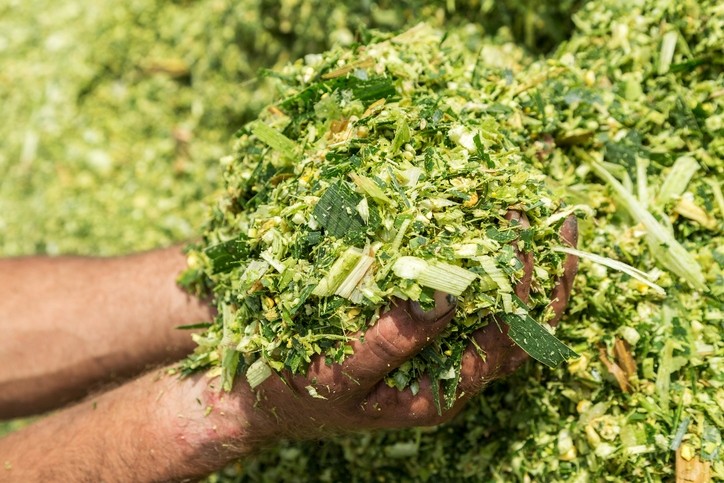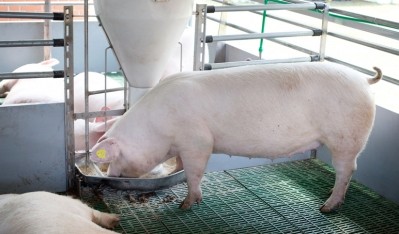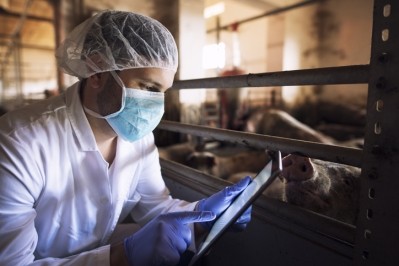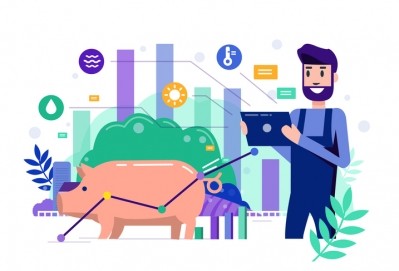Dispatches from the Cornell Nutrition Conference
How NIR technology can reduce variability in dairy feeds and hike milk yield

During the Cornell Nutrition Conference for Feed Manufacturers, we had a chance to speak with Chris Piotrowski, director of Aunir, a division of AB Vista, to hear more about the development of near-infrared (NIR) technology and how its connection to digital technology and cloud computing are progressing the use and functionality of NIR.
The analytical technology allows producers to have a better understanding of the variability in their feeds or forages, Piotrowski told us. He said the data provided can be a way to “optimize” feeds and rations and potentially allow producers to see an improvement in milk yield.
“They’ll get the benefits of the higher milk yields or at least maintaining the milk yields throughout the season rather than seeing an up and down movement,” he said of producers adapting their feeds to the variability that can be present in forages. “Giving them the real sort of ability to increase productivity, but really to plan on a fairly constant production level.”
It is an exciting period for producers interested in using NIR technology to evaluate their feed or forages day-to-day, said Piotrowski.
“To be able to take it to a level where we can take it on farm, has taken a number of years,” he said. “Really it’s the new digital technology that we’re working with now and being able to get a solid state instrument where we don’t have to surround it with lots of fans to keep it cool so we can actually use it in the field – it’s been quite a breakthrough.”
In the past few years, there has been an increasing push toward digitization and the development of smaller or portable NIR devices, he said. “With this new technology, we’re seeing miniature NIRs hit the market almost on a monthly basis …. it’s like the first digital cameras that we had,” he added.
“I think in the next two years it will be a technology, a sensor that will be on most farms and I think in the next five years it will be technology that we’ll all have access to and it will be part of our daily activities,” he said.
NIR use and development
The ability to take NIR analysis to the farm means that dairy producers can have a better understanding of the variability within the feed or forage they are using, said Piotrowski.
“We’ve done some work to show variability in a [silage] pit or a [silage] clamp, but really, until we monitor forage day-to-day as its being utilized that will give us a real knowledge of the variability,” he said. “It’s that variability that we need to control or really need to be able to formulate to, to get the real precise agriculture that this technology will bring us.”
Being able to test feeds or forages more often, “will allow us to really fine-tune the rations,” he added. “We can’t do that in the lab – by the time we get a sample there it’s deteriorated, it’s not quite what the animal is feeding at the time – that’s the quite exciting part of it.”
The company now has the ability to use the technology on farm in a system that links to a tablet, he said. A database of feed and feed ingredient calibrations is included on the tablet and can be used without internet access – however, it also can interact with online information when access is available.
“You can have someone on the farm doing the analysis and you can have a nutritionist sitting 200-300 miles away looking at the data real time and being able to advise the farmer what rations they need to make the best use of that forage he’s analyzing that day,” said Piotrowski.
NIR, big data and cloud computing
An NIR analysis examines the organic elements in feed ingredients and forages, said Piotrowski.
“It’s looking at carbon linked to oxygen, nitrogen, hydrogen so we’re measuring carbohydrates, we’re measuring dry matter, we’re measuring protein and we’re measuring the different fiber fractions, NDF, lignin,” he said. “So it gives us a really strong break down of all the components that we need for the nutritional values that we use to feed the dairy cow.”
However, that information needs context to be useful, he said. Large data sets and information about forages and feeds from different parts of the world, collected in different geographies and during different seasons are necessary to “train” an NIR to make the analysis relevant to producers.
“If it tried to analyze a forage it’s never seen before it won’t know what values to give it, so you have to have this really big data,” he added.
Currently, those data sets are held in the cloud, said Piotrowski, and the information is used on a local basis – to help produce a particular feed or ration. However, in the future, it is expected that the technology could be a way to improve precision farming.
“NIR is just one sensor that we have on the farm at our disposal but there are lots of other sensors … and if we really link all of that information together and if we really do the data mining and cloud computing then there is really powerful information held there,” he said. “We’ve got one small bit of it, other businesses have other bits of it and when we link that into cloud computing then there’s a real advantage to the farming community.”
The industry is moving in that direction, he said.
“Once you start that digitalization and miniaturization it just gets smaller more accessible,” he said. “Ultimately the camera you have on your cell phone will be replaced with an NIR sensor so you’ll be able to take visible pictures and at the same time get the molecular structure of what you’re photographing. It’s not that far away – 10 years we’ll be sitting at a dining table analyzing the food we eat before we eat it – we work on calories as well.”














